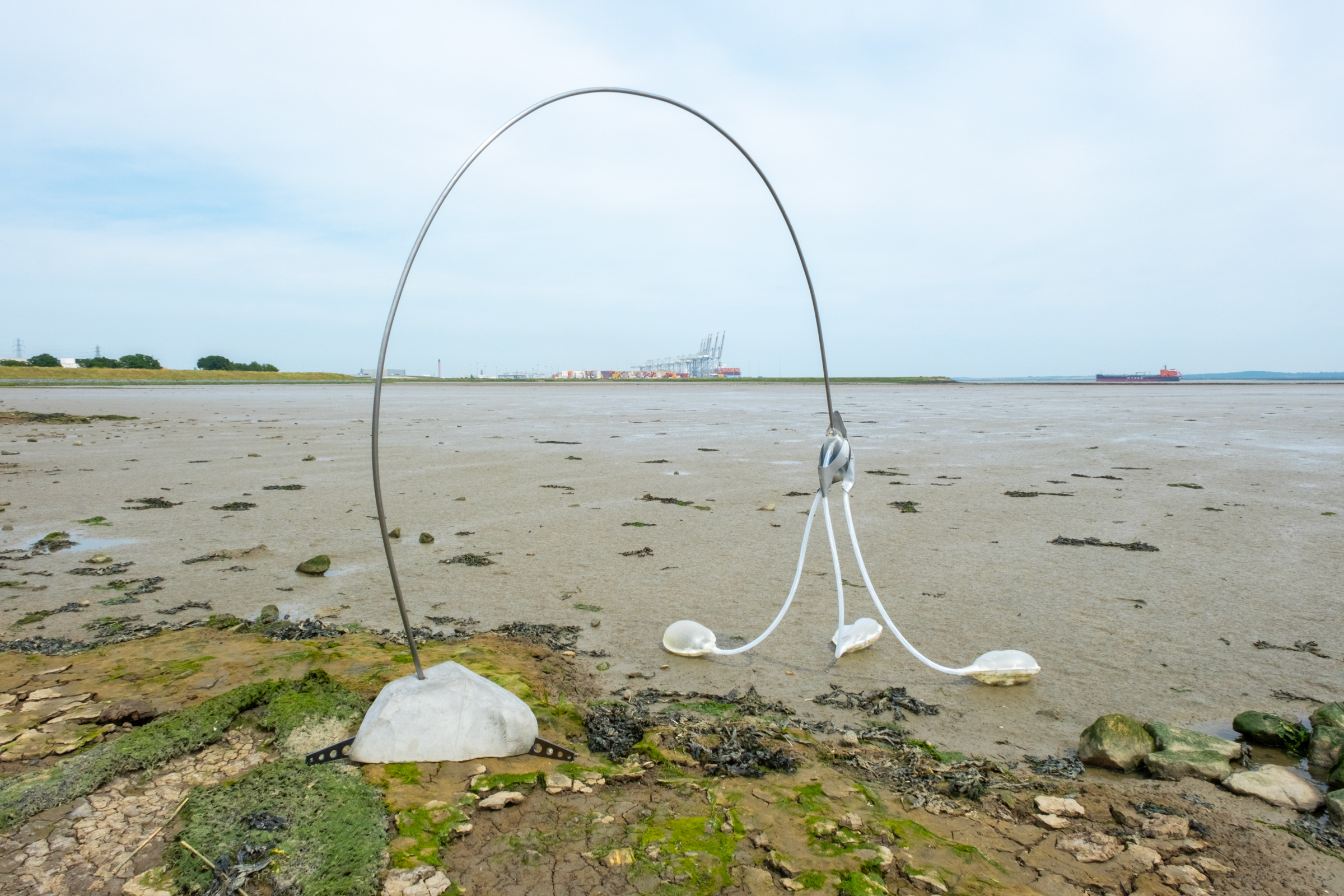Projects
Nobody Told Me Rivers Dream
Superflux debuts new work on river intelligence at the Design Museum this summer.
Design studio Superflux presents its new work Nobody Told Me Rivers Dream as part of the Design Museum’s major exhibition, ‘More than Human: Making with the Living World’, opening 11th July 2025. The work, presented as an installation in the exhibition, explores how artificial intelligence can help deepen our perception and understanding of the living world’s intricate intelligence.
Superflux has a long-standing practice exploring our interconnection with the living world. Earlier works delved into myths and forest lore to cultivate deeper relationships with our planet and its more-than-human inhabitants. Refuge for Resurgence, commissioned for Venice Biennale 2021, imagined a multispecies banquet amongst the remains of the Anthropocene. The same year, Invocation for Hope for the Museum of Applied Arts Vienna created an immersive forest emerging from wildfire ashes, creating moments of interspecies recognition. Nobody Told Me Rivers Dream brings this focus to how technology might tell a different story; one that serves the more-than-human world.
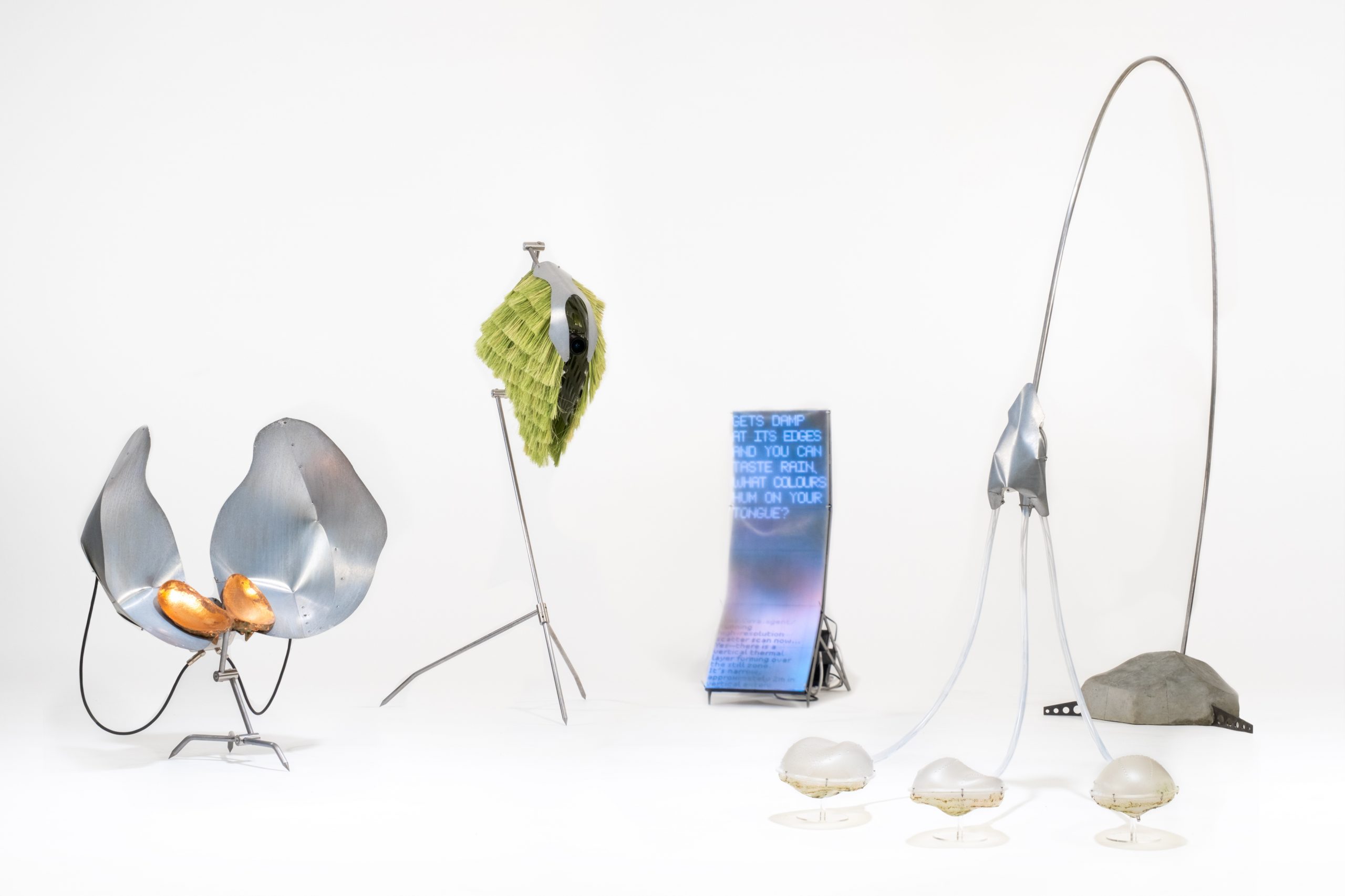
Nobody Told Me Rivers Dream invites visitors to deepen their sensory attention to the river Thames. Three intricately handcrafted, sculptural objects observe birdsong, tidal flows, and shifting skies. This environmental data then informs AI models that are trained not just on scientific information but on folklore and indigenous, ecological wisdom. The work asks how AI might help us relearn the deeper languages of ecological intelligence, exploring its role in our ongoing relationship with the living world.
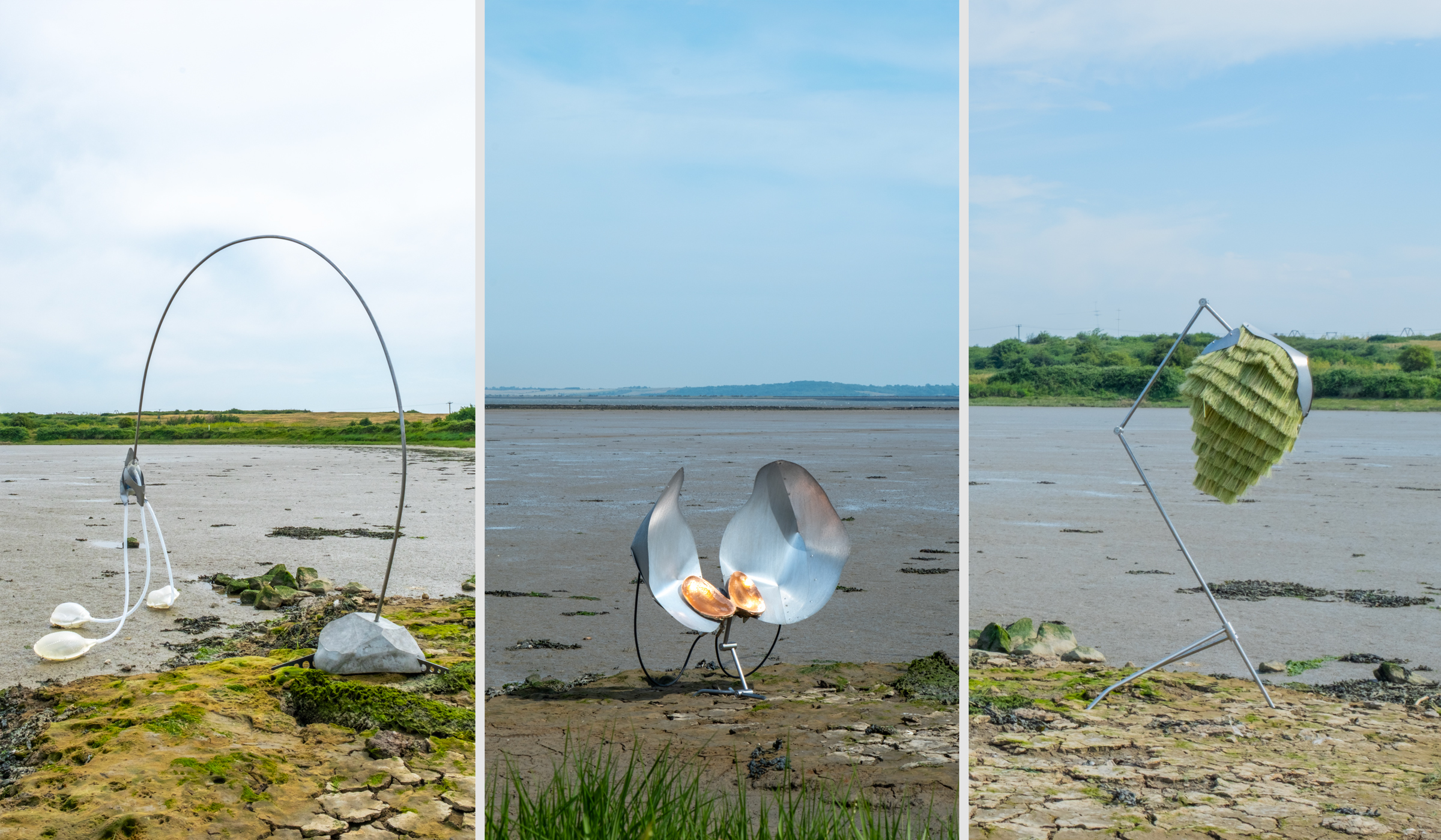
The work is an evolution of Superflux’s 2023 project, The Ecological Intelligence Agency (UK Policy Lab & DEFRA), which explored how AI might speak on behalf of rivers to create a more-than-human commons. Nobody Told Me Rivers Dream shifts the focus from policymaking to direct human experience, creating new possibilities for deepening our sense of connection with the wider planetary ecology.
Rivers As Teachers
The work features three sculptural sensor-objects, designed to sit lightly in the landscape along the river Thames. Embedded with custom-built sensors and large-language models, the objects are designed to process environmental signals by foregrounding river wisdom.
A birdsong sensor identifies bird calls that reflect shifts in weather, tracing the edges of the heron’s cry and kingfisher’s whistle. Arching its neck towards the river, a water flow sensor captures tidal rhythms and flow speed, while a weather sensor decodes atmospheric patterns, its face turned towards the sky. In their form and materiality, these sensor-objects draw inspiration from the local ecology of the River Thames. Their surfaces feature subtle copper leaf and natural patinas, while organic materials and biomorphic forms reflect their embeddedness in the environment they’re learning from. Utilising open-source electronics, they quietly process the daily patterns of the moving river and its many species.
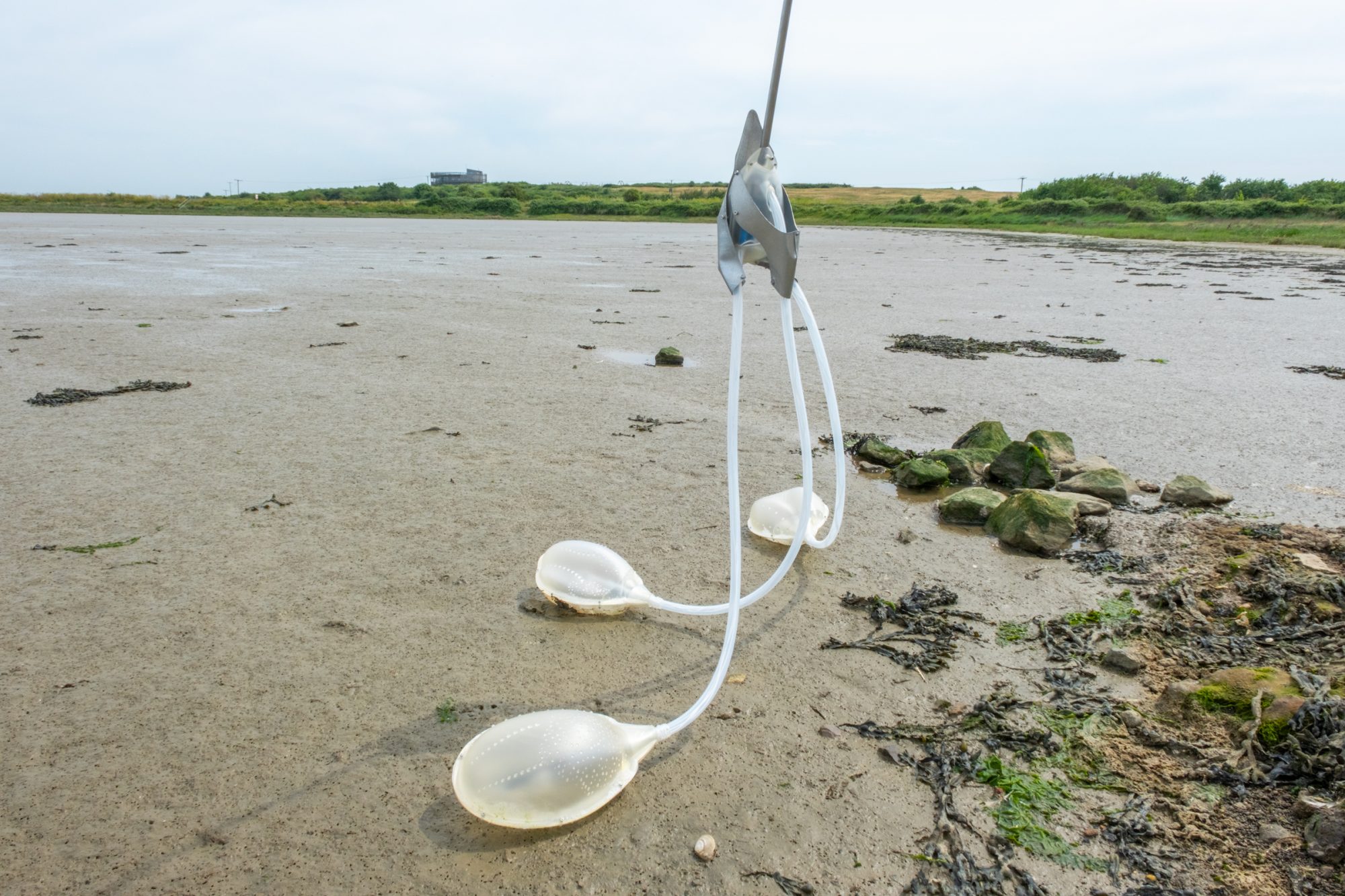
The sculptural trio is accompanied by a steel-framed device equipped with a GPU and a LED display screen. Together, they synthesise the sensory data and present poetic prompts and questions to visitors and passersby, inviting ecological attunement.
“AI is often criticised as an extractive, disembodied technology—and rightly so. Many AI applications reinforce a narrow, mechanistic worldview that privileges data extraction, efficiency, and predictive control over deeper, relational ways of knowing. But what if AI could be used in the service of ecological intelligence, rather than overriding it? By having AI observe the patterns, rhythms, and sensory cues that have shaped environmental wisdom for thousands of years, we’re asking whether AI might learn from, and incorporate ecological intelligence in the service of a more than human future.”
– Jon Ardern, Co-Founder of Superflux

Through these AI-powered sensor-objects, the project draws audiences into a renewed intimacy with place, where ecological intelligence—long marginalised or dismissed—might once again guide our senses and actions. Rather than asking humans to prompt AI, the project flips this relationship: the environment itself prompts the AI, which in turn prompts humans. It is an inversion that speaks to Superflux’s interest in shifting the dominant narratives of technology. The work asks what it might mean to build AI systems not for prediction or control, but for reciprocity, perception, and care.
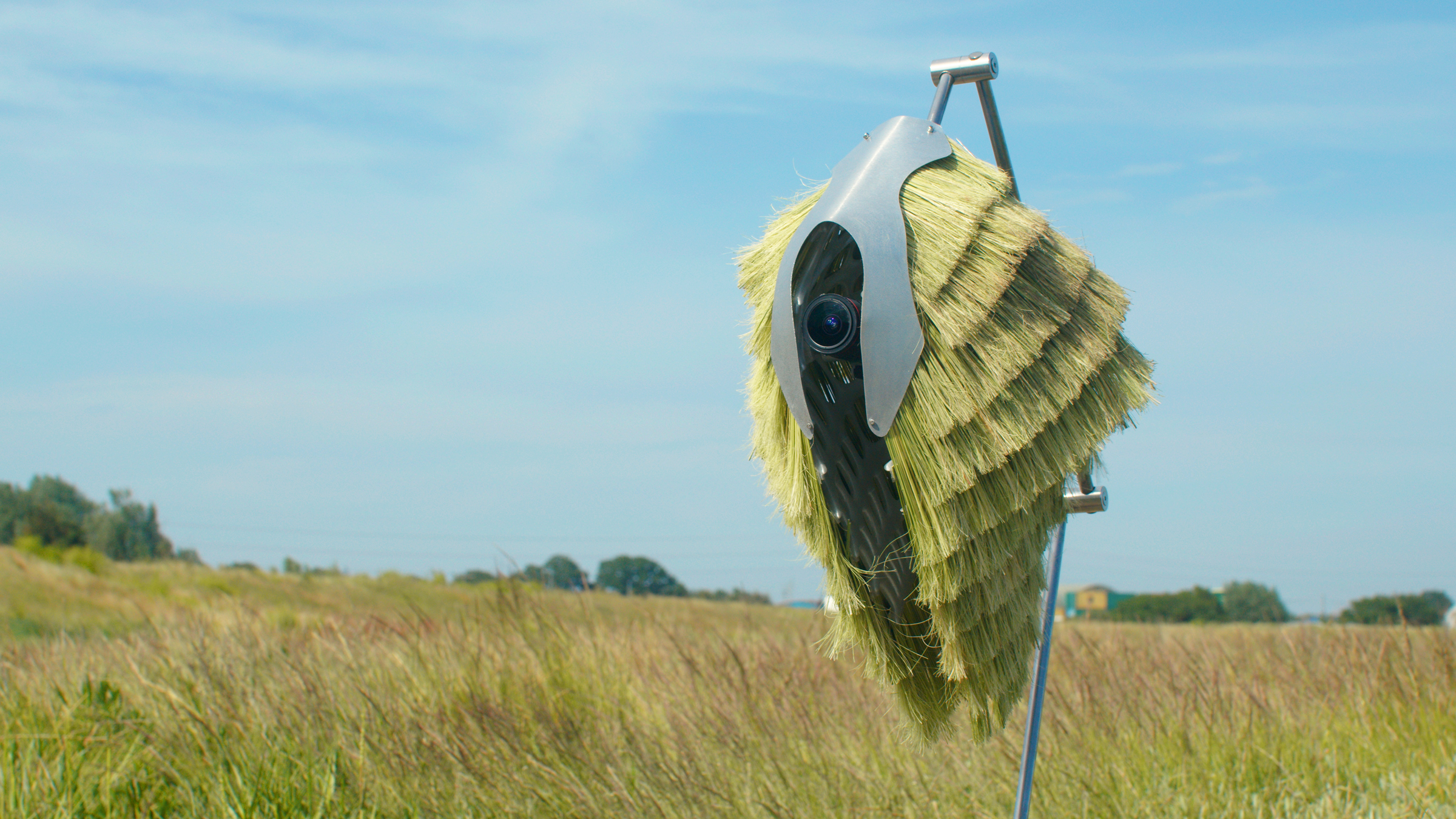
Ecological Intelligence In Practice
The ambition is for these sensor objects to remain active for a full year along the Thames, showcasing how such site-specific work can help reimagine the role of AI in diverse ecosystems worldwide. They act as silent observers, engaged in what the anthropologist Anna Tsing has called the “art of noticing.” This act of sustained observation connects the installation to a broader philosophy of sensing the world.
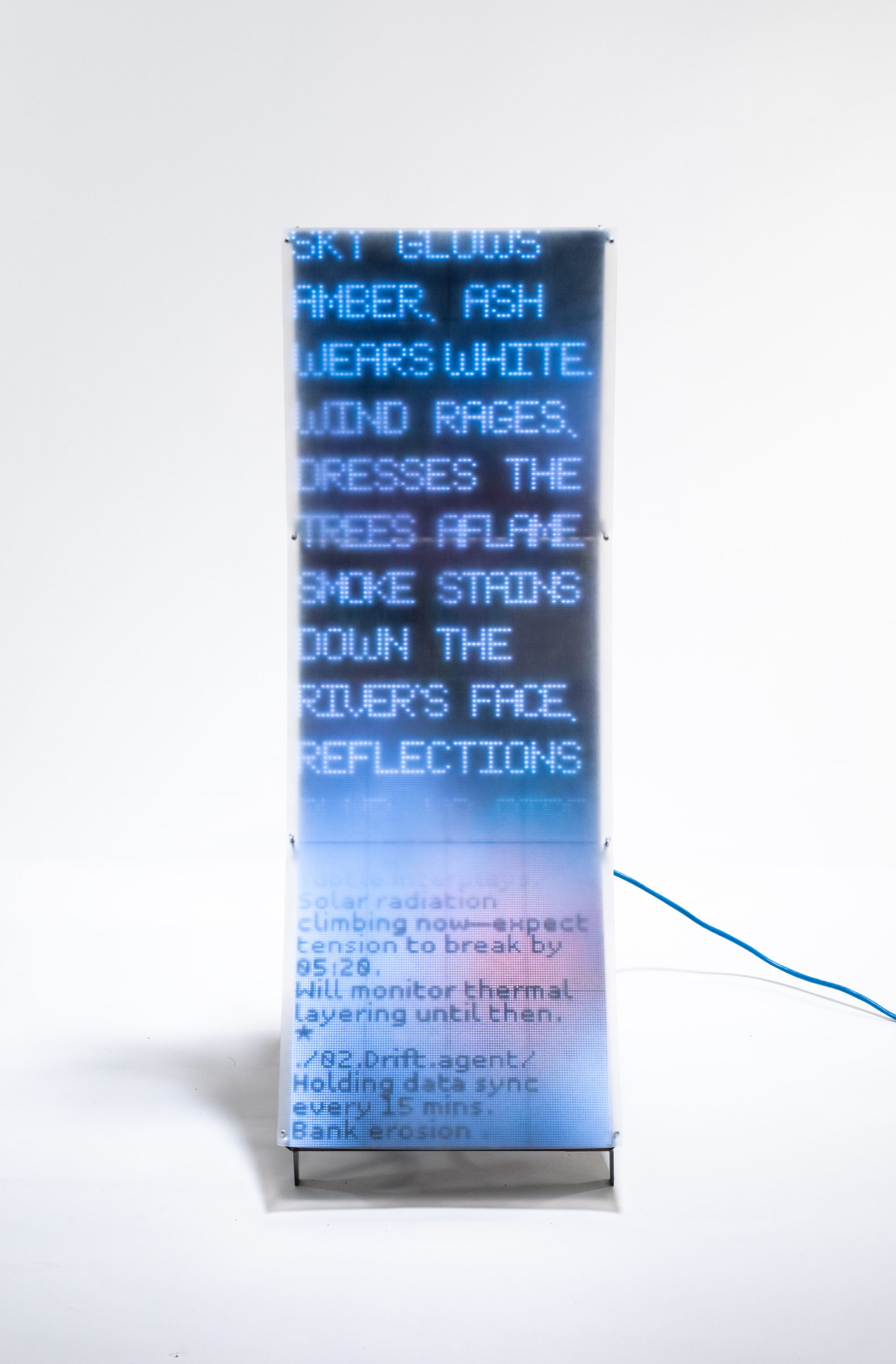
The poetic prompts generated by AI serve to tie visitors into this network of noticing. They provide a bridge between the data derived from the movements of rivers and tides and human experience, reminding us that the living world moves through us, too. Superflux grounds this work in proverbs, oral traditions, and folklore, recognising these as cultural archives of ecological intelligence—sensory, relational, and deeply embedded within the living world. They form the perceptual language of the land, an intuitive way of knowing that has sustained communities for millennia, now receding into memory. This contrasts with dominant knowledge systems that often elevate only recorded, institutionalised information.
“We advocate for a more sensuous, embodied mode of perception, one that recognises intelligence as something not confined to human cognition but arising from relationships between humans and the more-than-human world. Ecological intelligence is not something we observe from a distance: it is something we participate in, embody, and carry forward. Our devices are designed by humans together with more-than-humans: to understand what we have lost and are in the process of further eroding. Their purpose is to change the way people perceive the world, opening new ways of seeing, relating, and understanding our ecological entanglements.”
– Anab Jain, Co-Founder of Superflux.
The title itself—Nobody Told Me Rivers Dream—is a quiet provocation, prompting us to contemplate just how much is lost when knowledge that has been created and passed down over millennia, knowledge woven into the land, gets erased or forgotten. It hints at the project’s deeper philosophical commitment: to develop what might be called a “spiritual infrastructure”, one that cultivates reciprocity, humility, and relationality in the face of ecological breakdown.
